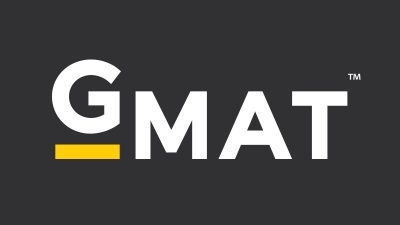One of the biggest fears of GMAT test-takers was the cancellation of the exam due to the Coronavirus lock down - a fear which was mitigated by GMAC as the exam is now available online. However, GMAC has announced some major changes to the at-home version of the exam, and these changes have left test-takers unnerved, confused and angry. From not being able to use pen and paper during the exam to no breaks in-between the 3 hour exam, these are the changes GMAC has brought to the at-home GMAT test, and here's what test-takers have to say about it.
 Important Note - Appointment dates for the GMAT Online exam are available beginning April 20, 2020 until June 15, 2020. GMAC will continue to monitor conditions and look to add future appointment dates as needed.
Important Note - Appointment dates for the GMAT Online exam are available beginning April 20, 2020 until June 15, 2020. GMAC will continue to monitor conditions and look to add future appointment dates as needed.
7 Major Changes To The GMAT's At-Home Online Variant That You Need To Know
With many GMAT test-centers having temporarily shut down due to the Coronavirus crisis, GMAC announced the transition of the GMAT exam into an at-home, online version of the original test, thereby allaying fears of cancellation amongst test-takers. GMAC has recently announced several changes to the testing process and paper pattern. The following are the temporary changes to the GMAT exam:

1.
The GMAT at-home online exam is cheaper, costing $200 - a reduction of $50 compared to the in-person GMAT exam.
2.
The Analytical Writing Assessment (AWA) section has been omitted for the at-home version of the GMAT exam. Now, there will only be three sections - Quantitative Reasoning, Verbal Reasoning, Integrated Reasoning. The rest of the paper pattern remains identical to that of the in-person test.
3.
You cannot select the order of sections that will appear, unlike with the in-person test where a test-taker could choose the order of the sections to attempt during the exam.
4.
There will be no optional-break between the Quantitative Reasoning and Verbal Reasoning sections, but test-takers can opt for a 5-minute break between the Verbal Reasoning and Integrated Reasoning sections. Earlier, candidates could take two optional 8-minute breaks between sections but that option has now been rescinded for the at-home GMAT test.
5.
You cannot view your unofficial scores immediately after the test has ended, unlike the in-person test. Your scores will be sent to you via email at the email address you provided during registration within 7-10 days of completing your exam.
6.
Your GMAT at-home online scores cannot be cancelled, and you can take the test only once. The exam will also not count towards your 12-month and lifetime limits for the test center GMAT exam. Additionally, enhanced score reports for post-exam analysis will not be available for the GMAT at-home online test variant.
7.
The GMAT Online exam does not permit the use of a whiteboard during the exam, unlike the in-person exam at a testing center. To assist you with the ability to take notes and/or draw shapes, there is an online whiteboard feature you can access during the exam. This online whiteboard allows candidates to:
- Enter text and draw shapes and lines.
- Change the stroke size of lines, the fill and background colors of shapes, and the size and font of text.
- Erase or clear to start something new.
Taking The GMAT Online? Expect To Be Supervised Throughout The Exam By A Human Proctor & AI
Apart from the aforementioned changes, GMAC has also introduced an AI-driven security and authentication system, which will check for four things:
- Your system is running the proper software and meets the hardware requirements
- A current digital photo uploaded for comparison to photo ID.
- Proper photo identification for the AI to compare your facial image to the one on your ID
- Workspace verification – the test taker must upload photos of the work space prior to beginning the exam. In addition to the uploaded workspace photos, the check-in proctor will conduct a second scan of the desk and work area by having the test taker show the work area and surrounding environment via webcam. After the webcam inspection, the proctor will check that no other applications are running on your workstation before launching the exam.
Additionally, during the exam, each candidate will be live-monitored via webcam and microphone by a proctor and the session will be recorded. There will also be an AI-driven monitoring system to identify the test taker during the exam.
Please refer to the
frequently asked questions section to clarify any further doubts about the GMAT Online exam. Also take a look at this short video created by GMAC to explain what to expect during the GMAT Online exam.

GMAC's Changes To At-Home Version of The GMAT Rub Test-Takers The Wrong Way
The changes to the GMAT for the at-home version of the test have not sat well with test-takers looking to apply for admission to the 2020 or 2021 intake.
"It's absolute bullshit, honestly. No one here thought GMAC would be dumb enough to forbid the use of a scratchpad but you really need one for Quant (I don't need one for Verbal but I could see why people want to use one). Also, it's crazy that you can't retake or cancel the score. I hope GMAC will revise scratchpad rule because now I am more demotivated than ever before to study," said one test-taker.
"I will be pausing all preparations starting today", said another GMAT aspirant looking to apply in Round 1 for the 2021 intake.
"I'm hoping we get some centers open soon too because honestly this version just sounds like a bad experience waiting to happen."
"It's really underhanded of the GMAC to make such a drastic change to the fundamental way that the test is taken. Like others have said, it's a completely different test now that no one's prepared for."
"Wow. This is like hunger games by GMAC. May the odds be ever in your favor. Now I understand why schools are waiving GMAT requirements, I mean who can possibly score well by drawing shapes and making calculations with a mouse and keyboard."
"It is bullshit. My advice to everyone - don't waste your time entertaining such nonsense. Keep studying and do the test on the first available test dates post lock down. GMAC are deluded."
Test takers are now extremely eager for the Coronavirus lock down to cease and for test centers to open for the in-person version of the GMAT exam to be reinstated so that things can come back to normal. It can be expected that the number of GMAT test-takers will reduce, and business schools may extend deadlines for various Rounds of the 2020 and 2021 intake, or announce test score waivers as has been done by the Kellogg School of Management.
With GMAC Under Fire For Changing The Testing Process, More Candidates Consider Taking The GRE At Home
With GMAC announcing these changes to the at-home version of the GMAT, it appears that students are considering shifting their focus towards the GRE which is also available an online variant of the exam, albeit with relatively lesser restrictions. As per the official website of ETS, the conducting body of the GRE, test-takers
"may not take notes on regular paper, for security purposes. You may take notes using one either a white board with erasable marker, or a paper with transparent sheet protector and erasable marker. You will be asked to erase all notes in view of the proctor at the end of the test."
"At this point I'm really tempted to go all in with GRE," says one test-taker on GMATClub. One GRE at-home test-taker on Reddit said that
"it [GRE at-home test] was pretty straightforward and easy,". You can
find out more about the GRE at-home testing process and rules here.
Preparing For GMAT/GRE? Here's What You Can Read Next




